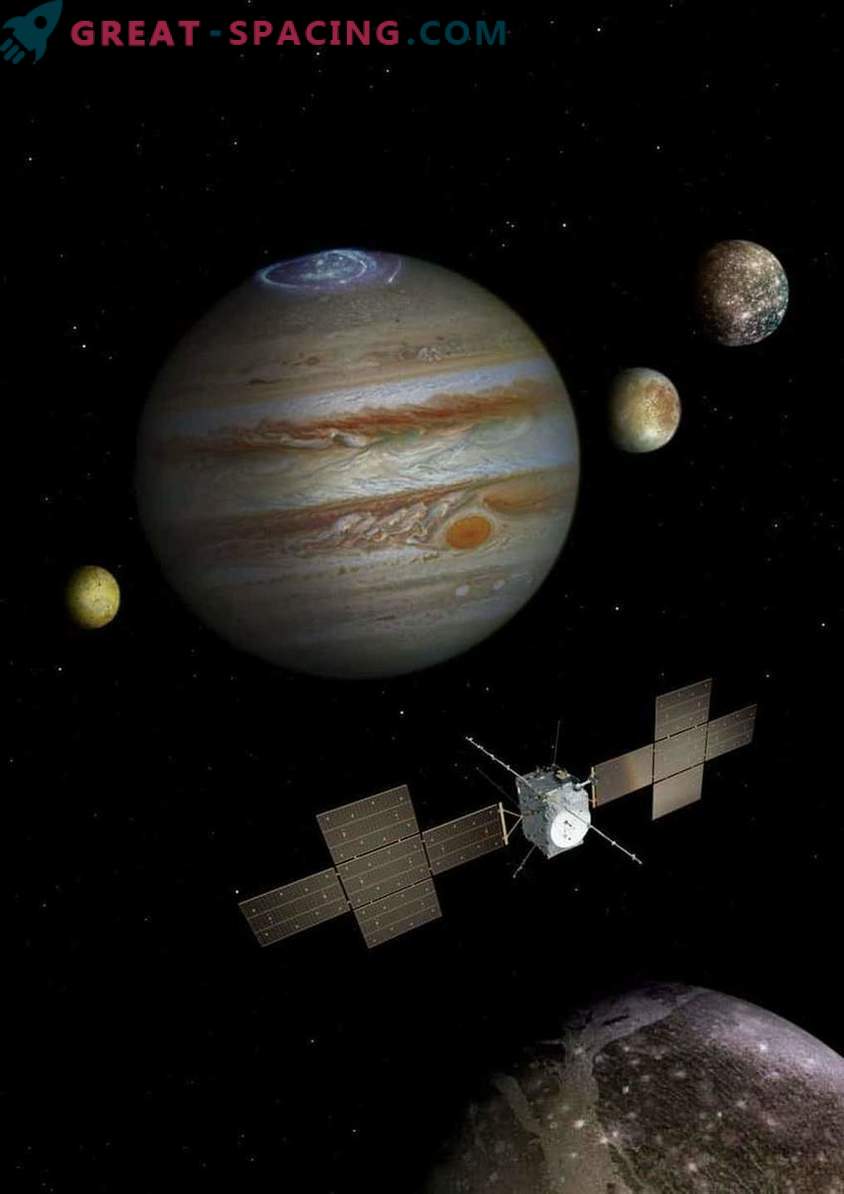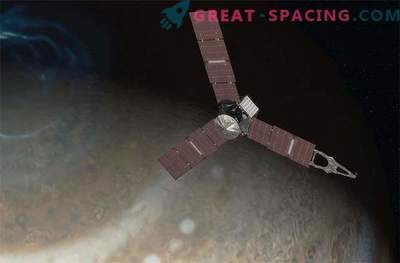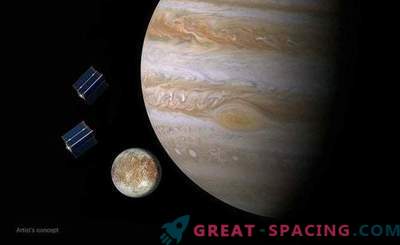
Artistic vision of the JUICE mission, studying the Jupiter system
The JUICE project (Study of Jupiter's Ice Moons) has demonstrated its willingness to set ambitious goals and achieve results. The launch of the device was planned for 2022. After traveling for 7.5 years, JUICE should arrive at Jupiter (2029). There, he will linger for 3.5 years, studying the giant and the environment, affecting the satellites of Ganymede, Europe and Callisto.
In order to examine in detail the atmosphere, the magnetosphere and thin planetary rings, as well as to characterize three ocean satellites, JUICE will be equipped with ten of the most modern instruments. These are cameras, spectrometers, a submillimeter echo sounder, an ice protection radar, sensors for monitoring magnetic fields and environmental particles, an altimeter and a radio interferometry experiment.
After confirming the completeness of the ship and the first tests of individual parts, the mission took another important step, demonstrating that all the tools meet the necessary requirements.
While the devices are functioning outside our planet, most of the work is performed by scientists and engineers on Earth, controlling, planning and sending commands. December 13, 2017 completed a review of the requirements for the ground segment.

This is a composition of images of Jupiter, where the Great Red Spot and the 4 largest satellites (Io, Europa, Ganymede and Callisto)
The mission operations center is responsible for managing the device and receiving data. They will also perform a number of specific functions, such as calculating a complex trajectory (5 maneuvers involving gravitations of Venus, Earth, and Mars). The mission’s science center will focus on scientific observations involving 10 tools.
After a successful review, the mission proceeds to the next stage. A future check is scheduled for the end of 2018. In April, they plan to conduct a lighting test, imitating the conditions of the span of Venus in the full-scale thermal model of the ship. In the middle of the year, an engineering model will be tested, and a critical design review is scheduled for the end of the year. So far everything is going according to plan, so the launch is expected on May 20, 2022.











































